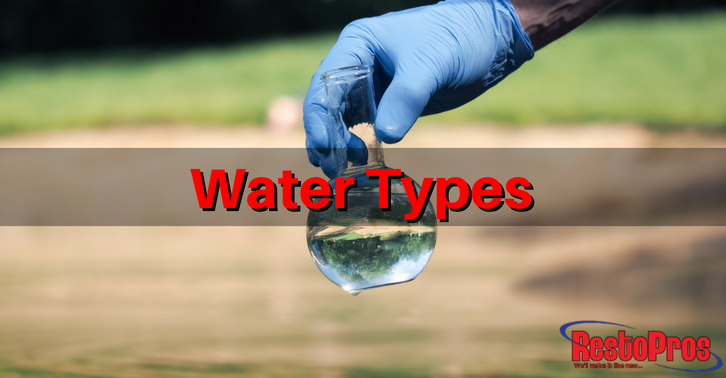 Water damage, on the surface, is simple: an item or surface came into contact with water and the structure was compromised. But when it comes to home or property damage, there’s more to it. The type of water and its long term effects on your home are important things to observe in the event of any emergency.
Water damage, on the surface, is simple: an item or surface came into contact with water and the structure was compromised. But when it comes to home or property damage, there’s more to it. The type of water and its long term effects on your home are important things to observe in the event of any emergency.
Water Types
First, there are three types of water that you should be aware of:
- Clean Water
- Grey Water
- Black Water
Clean water is exactly what it sounds like: water that was free of contaminants or potable before it spilled into your home. This kind of water typically comes from rainfall or the pipes leading into your home. The biggest hazard you’ll face here is from water that left standing or is not cleaned up swiftly enough. Be cautious, always shut off power to any room that is flooded before entering, regardless of how clean the water is.
Grey water is mid-range in cleanliness. While not toxic or caustic, it isn’t suitable for drinking. For many homes, grey water is perfect for watering the lawn after it’s been used in the home. Grey water contains bacteria and other microorganisms that, while not harmful to your yard, is not suitable for drinking or walking through (use rubber gloves and boots while cleaning up). When a sewer line backs up or a drain pipe breaks, the water that flows out is grey water. Even water that leaks from a washing machine is considered grey water since it’s no longer suitable for drinking. The contaminants here are hazardous and will incite mold growth quickly if left unchecked.
Black water is the most dangerous. Fortunately, few homes are going to encounter black water unless they’re in the middle of a major catastrophe. Black water is typically the result of a natural disaster (severe flooding), sewage break, or a substantial chemical spill. Pesticides, chemicals, bacterial diseases, microbes, and countless other contaminants are contained in black water. When flooding damages entire city blocks and overflows sewers and drain lines, avoid all contact with the water.
Types of Water Damage
Once water damages a surface, the impact can be anywhere from mild to catastrophic. Sometimes you’re looking at damaged books that will need to be dried or thrown away. Other damages consist of:
- Peeling Laminates
- Warped Wood
- Swelled Timbers
- Mold Growth on Porous Surfaces
- Rotting of Wood and other Materials
- Staining on Carpets, Walls, and Paint
- Rust
Some of this damage is only evident after the water has been pumped out of the home or dried out. Water spots and stains are often difficult to detect until the entire area has dried, and rust won’t appear until after steel has had a chance to oxidize. It’s important to keep an eye on affected areas for a while to make sure you’re home hasn’t been compromised. Or call an expert to inspect and advise on the damage, regardless of the source or type of water.
Don’t forget to follow RestoPros on Facebook, Twitter, LinkedIn, and Google+ for new Updates, News, and Discounts
